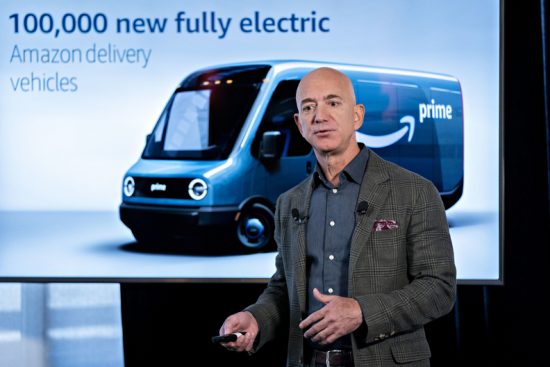Changing expectations from society are influencing the way industries conduct their business. Companies are increasingly aware of the need to earn the trust of local communities. In today’s world, they not only need regulatory permission to conduct their business, but a social license too. This so-called license to operate is essential to preserving organizations, but also to strengthening them. A zero-emission fleet is a great way for companies to gain a license to operate.
Clear business case
Electrified fleets hold a clear business case: if you drive over 30.000 to 50.000 kilometres a year, it takes about two to three years of ownership or lease to earn back your investment in an average developed country – depending on the type of vehicle. In principle, the economics of EVs consist of higher investments costs, but lower running costs compared to ICEs. In addition, high technical and investment risks associated with electric fleet adoption belong to of the past, since we’ve moved well beyond the pilot phase of deploying green fleets such as electric busses. Today, 425,000 electric public buses are in service globally.

16,359 public electric buses drive around in Shenzhen
Lithium batteries make up around a third of electric vehicles’ total cost of ownership. Over the past decade, lithium battery cell prices have declined by 85%. And it’s going to decline even more. On the 2020 Tesla Battery Day, Elon Musk announced a 56% drop in price per kWh while increasing the km/kWh range by 54% in the next three years. Although Tesla is infamous for overstating its targets, it gives you an idea of where the market is heading.
Adding electric vehicles to your fleet can dramatically reduce running costs. Take Deutsche Post DHL, for example. The German delivery company is seeing 60-70% savings on fuel costs and 60-80% savings on maintenance and repair from its StreetScooter electronic vehicles compared to their fossil fueled cousins.
Competitive advantage for the future
While zero-emission fleets already have considerable upsides right now, their advantages will become even bigger in the future. No matter how you look at it, policy and regulation are inevitably moving towards zero emission. Cities such as London, Paris, Los Angeles, and Tokyo, have made commitments to creating zero emission zones by 2030. A sustainability strategy might not be necessary to be competitive today, but it sure will be in the future.
Companies such as Amazon are well aware of this and seek to become carbon neutral by 2040. In February last year, Amazon invested €600 million in Rivian, an electric vehicle manufacturer, as part a of €1.2 billion investment to fight carbon emissions. A few months after the investment, Rivian announced it was going to build 100,000 electric delivery vans exclusively for the online retail giant.

Amazon’s Jeff Bezos announces the order of 100,000 electric vans
Next to a clear business case and a competitive advantage for the future, zero-emission fleets are a great way for companies to show people they’re doing the right thing. That’s why more and more companies are turning to a green fleet.
Three pointers of advice
The transition to a green fleet should be a breakthrough opportunity to fundamentally rethink operations, positioning, and growth in order to turn into greener, more efficient and innovative organizations.
1. Redesign operations bottom up
A green fleet can mean different technical, social, and economical components. This may sound like a challenge, but you can turn it into an opportunity by rethinking your operations on a fundamental level. An electric bus, for instance, needs to be charged for a longer period of time per km compared to an ICE bus, resulting in lower vehicle utilization. By charging buses through a robotized rapid charging station every time it makes a stop, you tackle this problem. It even leads to higher vehicle utilization compared to an ICE. Hidden benefits of zero-emission fleets can be seized by taking a holistic look at your current fleet operations and start designing your green fleet operations from the bottom up.
“We see more change in the next five years than there’s been in the last 50.” ― Dan Ammann, President, General Motors.
2. Take a stand as a supply chain captain
Ask -or demand- your suppliers to provide their goods and services using only zero-emission transportation. About 40% of the global GHG emissions are driven by indirect upstream and downstream emissions that occur in the supply chain. Zero-emission transportation leads to a stronger and more competitive route to market: carbon-related risks are mitigated while you’re optimizing spend. Especially if you share your support and learnings with supply chain partners in order to successfully transition to a green fleet.
3. Unlock new green top-line growth
Green logistics has great potential to diversify your revenue streams and enable top-line growth. Smart asset utilization can reduce OpEx, CapEx and carbon emissions, for example by reducing the amount of duty cycles and delivery vans. It can also drive top line growth by sharing cargo space with partners in the same geographical area. By using empty last miles as a transport solution for retail players or return logistics, for instance. Another way of unlocking new and green top-line growth, is to use this transition as a gateway to new markets. A great example is LeasePlan, a €10 billion car leasing company that became an energy player offering innovative white label energy solutions to its clients.
In conclusion, it’s vital for organizations to have a green fleet strategy. It will give your company’s operations that edge required to be future-fit. And when you think out of the box, it could bring surprising new opportunities as well.
Author: Michiel Frenaij, Business Development Manager at Faraday Keys.



 +31-208-208-765
+31-208-208-765





